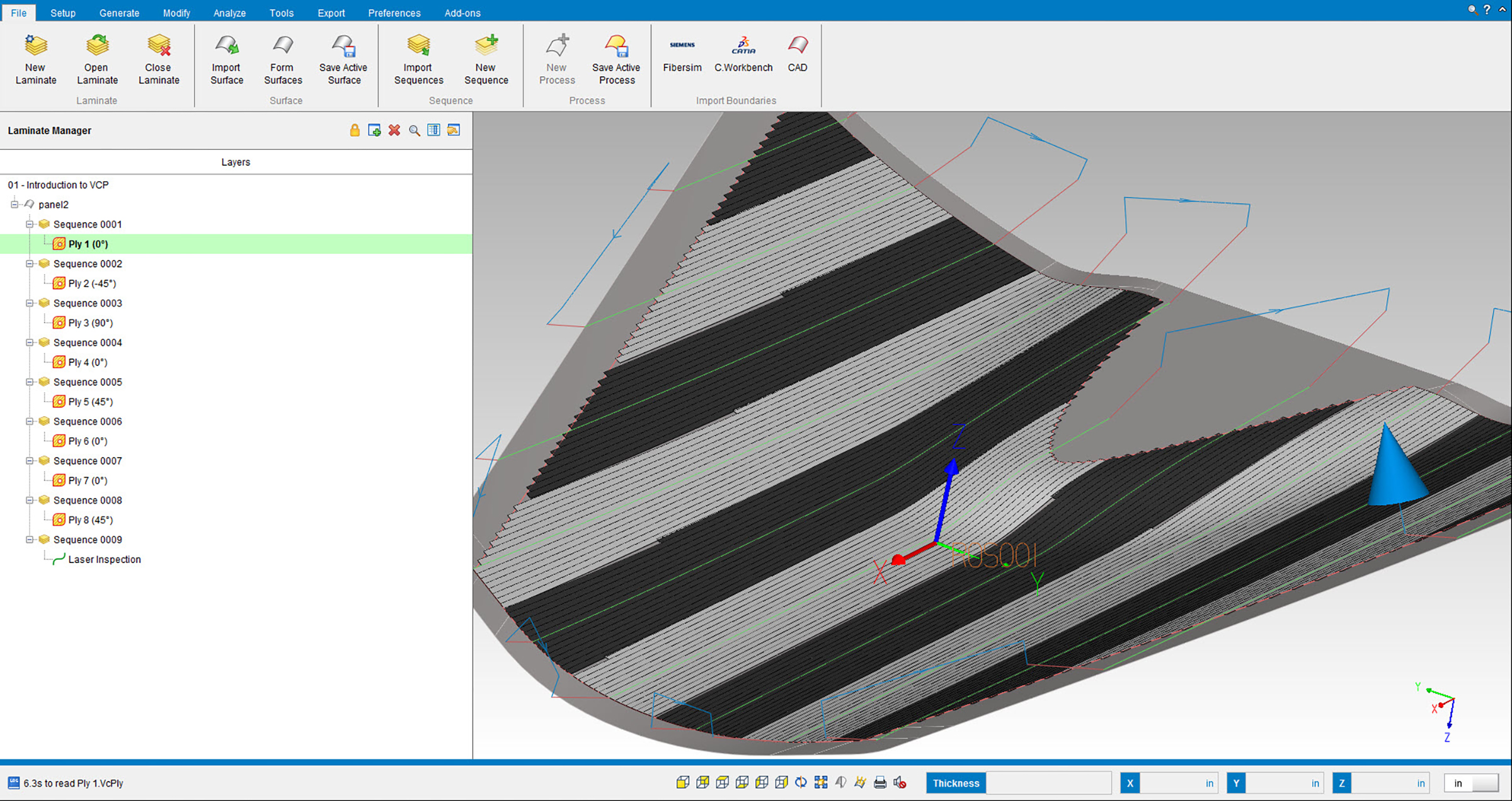VERICUT Composites Programming
The CGTech VCP software reads CAD surfaces and ply boundary information before simulating the addition of materials to fill specific piles according to user-specified manufacturing standards and requirements. Layup paths are linked together with VCP to form specific layup sequences and outputs. These outputs are NC programs for an automated layup machine.
VERICUT Fiber Placement Programming Process
Reads Fiberism, CATIA STEP or SAT external ply geometry and information
The information read by the VCP program gives extra insights into the boundary geometry, ply direction, axis or rosette system and the start points of the simulation.
Creates geometry within VCP
The geometry created inside the software varies from axis systems to points, lines and curves. Another highlight for the VCP software is the ability to add thickness to form for subsequent sequences.
Generates layup paths based on engineering specifications
CGTech’s VCP programme has a range of generating benefits including the ability to create rosette projection at specified angles. Alongside that VCP creates a parallel guiding curve and follows the natural path of the relevant form’s surface with limited material steering.
Visualises roller orientation
To help in the visualisation of the simulation, VCP displays the roller and machine head to help minimise collision risk. Where any issues are still apparent, it will detect roller collisions and visualise roller conformance to the layup surface.
Links paths to create form layup sequences
VCP gives you the chance to automatically or manually link paths based on the shortest distance and the form’s topography. There are various insert options including machine-specific commands and actions or the inclusion of safe start and restart events.
Post-processes linked paths
There is a range of linked paths available with VCP including the output per machine requirements, configurable machine specific events, feed rate optimisations and the safe start and restart sequences.
Optimises the quality process
VCP gives you the ability to export XML files for laser projectors, a particularly exciting opportunity for a variety of industrial uses. Head paths, ply boundaries, safe starts and tow gaps also help in the optimisation of the quality control process.
Calculates and balances material usage
The in-depth nature of the VCP programme means that you can keep track of the material used in each spool which gives you a good estimate of the live process. The data also lets you alter head paths to redistribute material.
Checks material conformance
A new feature associated with VCP is the heat map feature which helps in the visualisation of ply angle deviations, steering violations and roller compressions. All these visualisations help to pinpoint the most severe material violations.
Analyses gaps, overlaps and staggers
The features of VCP also make it possible to highlight excessive overlaps and gaps in a process while calculating the sums of both. It can also control and stagger splice locations and visualise areas of course convergence.

Additional reading about VCP
Roadmap to Automated CompositesPDF Download
The free-to-download paper discusses the benefits of ACM, including rapid material placement, increased throughput, better quality, and reduced labour costs. It emphasises the advantages of part reproducibility and the elimination of human interpretation errors.
VCP can have significant speed advantages of ACM over manual processes, with examples of high material laydown rates achieved by ACM machines. It can also decrease production time and the downloadable PDF highlights the importance of inspection in ACM and how automation can reduce inspection time. Machine reliability and the role of software in improving machine repeatability is imperative to engineering and is an area in which VCP thrives.
The costs associated with implementing ACM, including tooling, logistics, training, and facility modifications can be high but the benefits are tenfold as considerably higher. It is important to conduct cost analysis for a realistic return on investment (ROI) estimation.
 Germany
Germany Italy
Italy USA
USA South Korea
South Korea UK
UK India
India France
France China
China Japan
Japan